Sensorimotor brain dynamics reflect architectural affordances
- PMID: 31189596
- PMCID: PMC6642393
- DOI: 10.1073/pnas.1900648116
Sensorimotor brain dynamics reflect architectural affordances
Abstract
Anticipating meaningful actions in the environment is an essential function of the brain. Such predictive mechanisms originate from the motor system and allow for inferring actions from environmental affordances, and the potential to act within a specific environment. Using architecture, we provide a unique perspective on the ongoing debate in cognitive neuroscience and philosophy on whether cognition depends on movement or is decoupled from our physical structure. To investigate cognitive processes associated with architectural affordances, we used a mobile brain/body imaging approach recording brain activity synchronized to head-mounted displays. Participants perceived and acted on virtual transitions ranging from nonpassable to easily passable. We found that early sensory brain activity, on revealing the environment and before actual movement, differed as a function of affordances. In addition, movement through transitions was preceded by a motor-related negative component that also depended on affordances. Our results suggest that potential actions afforded by an environment influence perception.
Keywords: architectural cognition; mobile EEG; mobile brain/body imaging; predictive processing; sensorimotor.
Copyright © 2019 the Author(s). Published by PNAS.
Conflict of interest statement
The authors declare no conflict of interest.
Figures
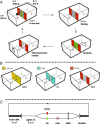

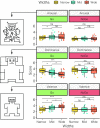

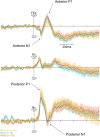
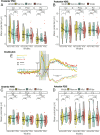
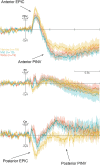
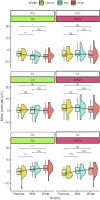
Comment in
-
Neuroscience for architecture: The evolving science of perceptual meaning.Proc Natl Acad Sci U S A. 2019 Jul 16;116(29):14404-14406. doi: 10.1073/pnas.1908868116. Epub 2019 Jul 5. Proc Natl Acad Sci U S A. 2019. PMID: 31278152 Free PMC article. No abstract available.
References
-
- Gibson J. J., The Ecological Approach to Visual Perception (Psychology Press–Taylor & Francis Group, East Sussex, UK, 1986).
-
- Clark A., An embodied cognitive science? Trends Cogn. Sci. 3, 345–351 (1999). - PubMed
-
- Clark A., Surfing Uncertainty, Prediction, Action and the Embodied Mind (Oxford University Press, New York, 2015).
-
- Friston K., Kilner J., Harrison L., A free energy principle for the brain. J. Physiol. Paris 100, 70–87 (2006). - PubMed
-
- Hohwy J., The Predictive Mind (Oxford University Press, Oxford, UK, ed. 1, 2013).
MeSH terms
LinkOut - more resources
Full Text Sources

